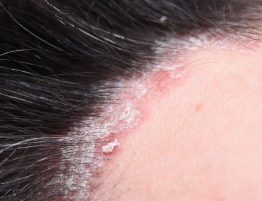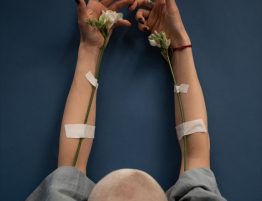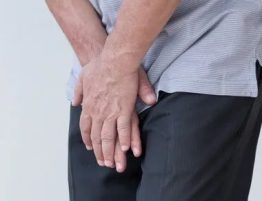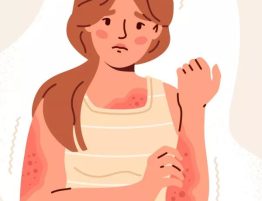
Scleroderma is a long-lasting disease that affects the patient’s skin, connective tissue, and internal organs. It happens when the patient’s immune system causes the body to make too much of the protein collagen, an important part of the skin.
As a result, the skin gets thick and tight, and scars can form on the lungs and kidneys. The blood vessels may thicken and stop working the way they should. This leads to tissue damage and high blood pressure.
The disorder isn’t confined to skin changes. It can also affect the patient’s;
- Blood vessels
- Muscles
- Heart
- Digestive system
- Lungs
- Kidneys
Features of scleroderma can appear in other autoimmune disorders. When this occurs, it’s called mixed connective disorder.
Types of Scleroderma
There are two kinds of scleroderma;
Localized scleroderma mainly affects the patient’s skin. It happens in one of two forms;
- Morphea – this involves hard, oval-shaped patches on the skin. They start out red or purple and then turn whitish in the center. Sometimes, this type can affect blood vessels or internal organs. This is called generalized morphea
- Linear – this kind causes lines or streaks of thickened skin on the arms, legs or face.
Systemic scleroderma, also called generalized scleroderma, can involve many body parts or systems. There are two types;
- Limited scleroderma – this comes on slowly and affects the skin of the patient’s face, hands and feet. It can also damage the lungs, intestines, or esophagus, the tube that carries food from the mouth to the stomach. It’s sometimes called CREST syndrome, after its five common signs;
- Calcinosis – this is when calcium salts form nodules under the skin or in the organs.
- Raynaud’s phenomenon – this is a lack of blood flow to parts of the body such as the fingers, toes or nose, usually because of cold. The skin might turn red, white, or blue.
- Esophageal dysfunction – this is when the esophagus doesn’t work the way it should.
- Sclerodactyly – this is when the skin becomes thin and shiny. It usually causes problems with moving the fingers and toes.
- Telangiectasia – this is when small blood vessels grow near the surface of the skin
- Diffuse scleroderma – this comes on quickly. Skin on the middle part of the body, thighs, upper arms, hands, and feet can become thick. This form also affects internal organs like the heart, lungs, kidneys, and gastrointestinal tract.
Symptoms
Scleroderma’s signs and symptoms vary, depending on which parts of the body are affected.
- Skin – nearly everyone who has scleroderma experiences hardening and tightening of patches of skin. These patches may be shaped like ovals or straight lines, or cover wide areas of the trunk and limbs. The number, location and size of the patches vary by type of scleroderma. Skin can appear shiny because it’s so tight, and movement of the affected area may be restricted.
- Fingers or Toes – one of the earliest signs of scleroderma is Raynaud’s disease, which causes the small blood vessels in the patient’s fingers and toes to contract in response to cold temperatures or emotional distress. When this happens, the fingers or toes may turn blue or feel painful or numb. Raynaud’s disease also occurs in people who don’t have scleroderma.
- Digestive System – scleroderma can cause a variety of digestive symptoms, depending on which part of the digestive tract is affected. If the esophagus is affected, the patient might have heartburn or difficulty swallowing. If the intestines are affected, the patient might have cramps, bloating, diarrhea or constipation. Some people who have scleroderma may also have problems absorbing nutrients if their intestinal muscles aren’t properly moving food through the intestines.
- Heart, Lungs or Kidneys – scleroderma can affect the function of the heart, lungs or kidneys to varying degrees. These problems, if left untreated, can become life-threatening.
Treatment for Scleroderma
Treatment can’t cure the condition, but it can help reduce symptoms and slow disease progression. The treatment is typically based on a person’s symptoms and the need to prevent complications.
Treatment for generalized symptoms may involve;
- Corticosteroids
- Immunosuppressants, such as; methotrexate or Cytoxan
- Nonsteroidal anti-inflammatory drugs
Depending on the symptoms, treatment can also include;
- Blood pressure medication
- Medication to aid breathing
- Physical therapy
- Light therapy, such as ultraviolet A1 phototherapy
- Nitroglycerin ointment to treat localized areas of tightening skin
The patient can make lifestyle changes to stay healthy with scleroderma, such as avoiding smoking cigarettes, remaining physically active, and avoiding foods that trigger heartburn.
What We Offer
We at Almurshidi Medical Tourism will find the best doctors to cater to your needs. We are partnered with a wide network of hospitals and clinics that provide top quality medical experience.
We provide free medical estimates, make medical appointments, and provide several medical opinions if needed at no cost.
Contact Us
For more information contact us at +66822004040 or via WhatsApp








